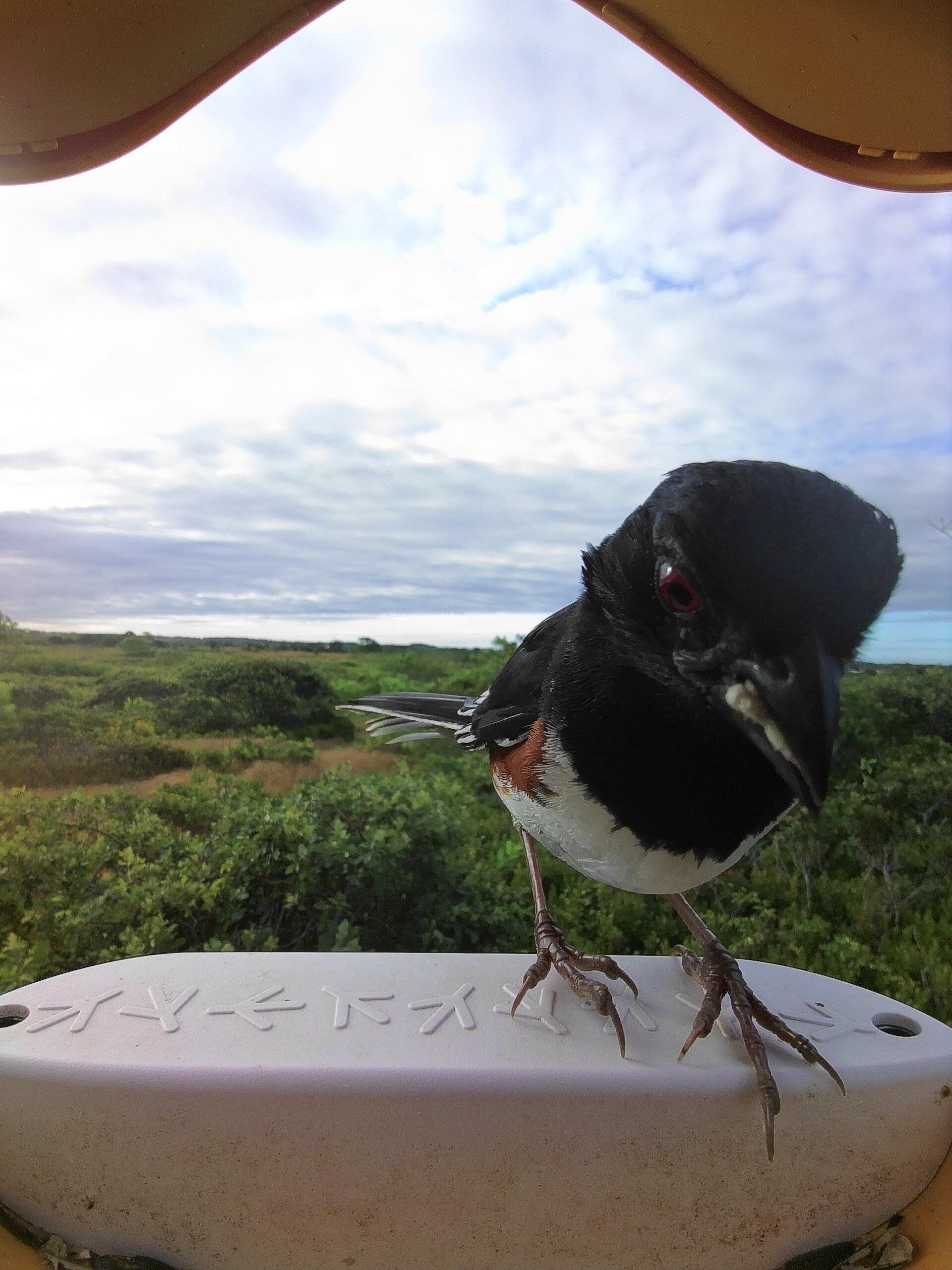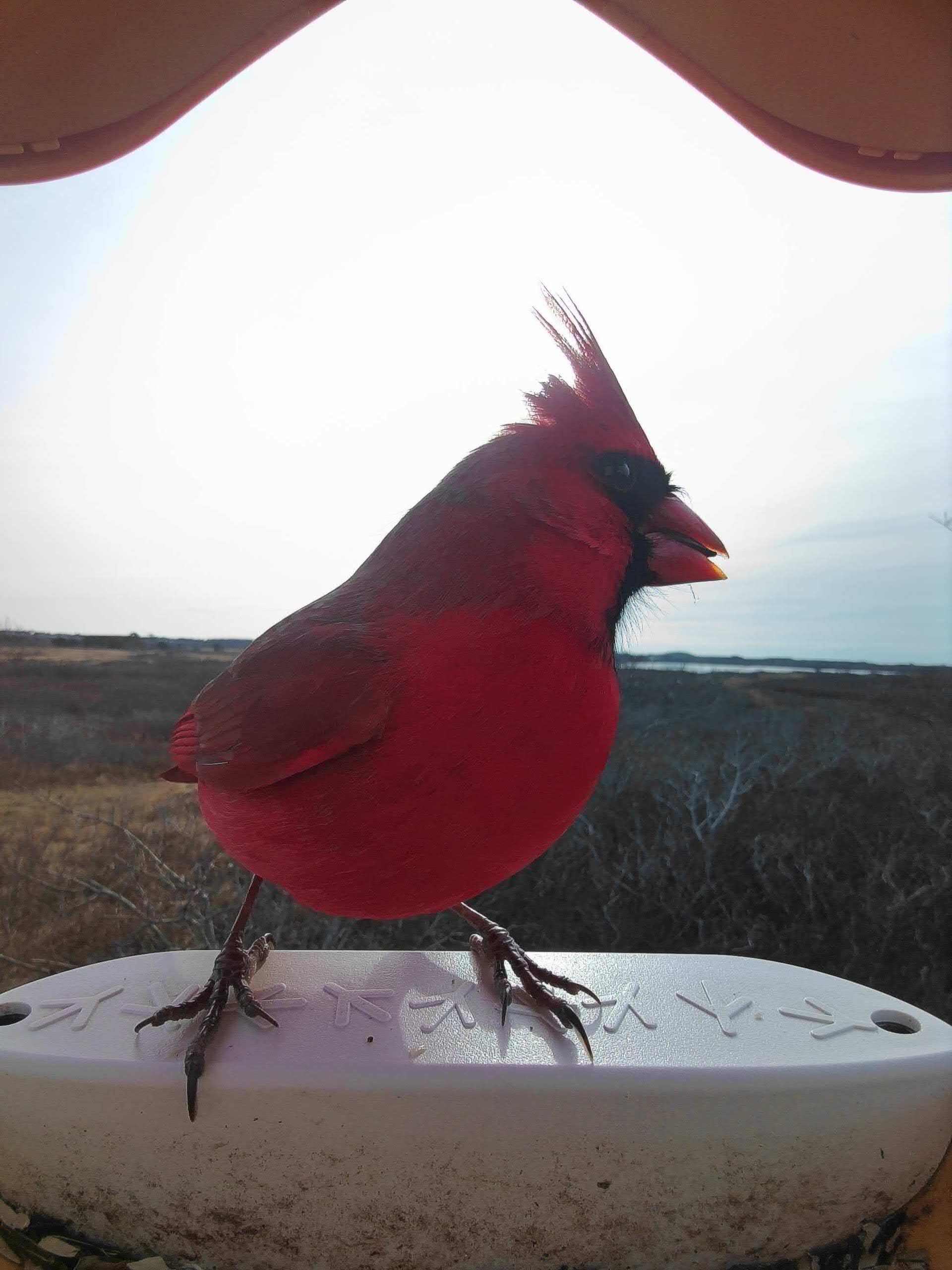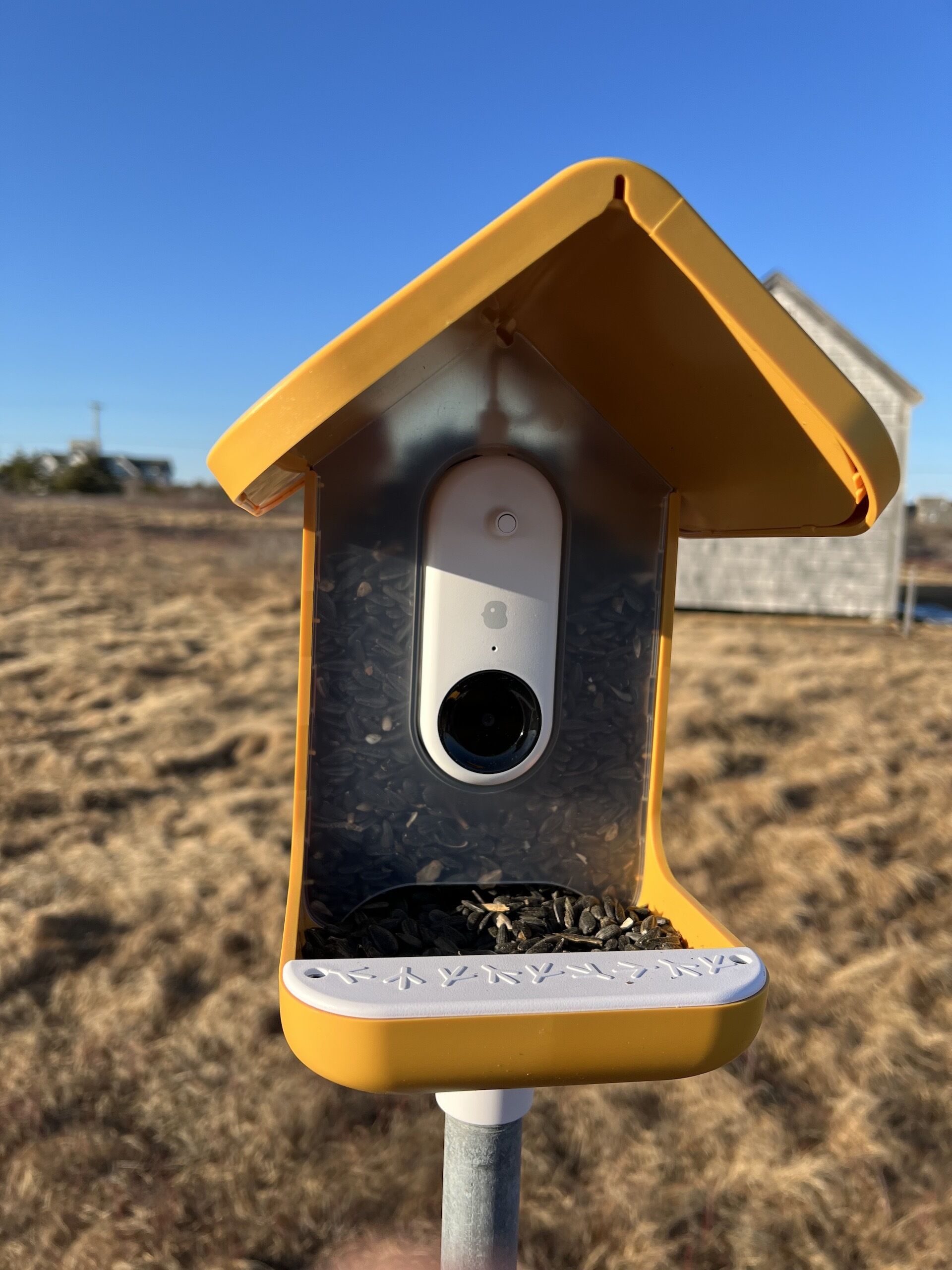Current Nature: Be A Bird Buddy!
Seth Engelbourg, Naturalist Educator and Program Manager at the Linda Loring Nature Foundation •
In today’s age of modern technology, there are more options than ever to learn about birds in your own backyard. One of the coolest items to recently hit the market is the Bird Buddy, a compact bird-feeder that takes pictures of the birds that visit, identifies them for you and sends the photo directly to an app on your smartphone.

You could be in the comfort of your bed or on a trip halfway around the world and still have an engaging interaction with your local fauna. Here at the Linda Loring Nature Foundation, we installed a Bird Buddy about a year ago and have captured photos, videos, and audio of 13 different bird species! We even got an inquisitive deer on the camera, who was licking it and trying to figure out what it was. Bird Buddy's reference database is still in its early stages, which can cause some misidentifications, but fortunately, you can review the photos and correct the species if necessary.
For each species, information is provided on the bird's size, range, and preferences. These tidbits can help you learn about birds in a casual, self-guided way, particularly if you are a novice birder. You can cross-reference Bird Buddy's images and information with the Merlin ID app from Cornell Lab of Ornithology. This is one of the most comprehensive tools available for identifying birds. Merlin ID is truly awesome and provides users with photos, audio, range maps, and descriptions of thousands of birds worldwide. It even can help you identify birds based on your own photos or audio.

Beyond being just a camera, Bird Buddy’s staff leverages it as a tool for fun. They have a dedicated bird meme generator on their website. They also offer the ability to send your pictures as electronic holiday cards. Additionally, they provide a function where you can join other feeders from around the world to see the birds in those locations. They have over 190,000 users in more than 120 countries, collecting more than one million bird sightings daily! As those numbers continue to grow, their identification algorithm will improve, increasing the accuracy of your feeder records. They also have launched several physical improvements to the feeder, such as accessories to entice different species of birds. If reading this excites you, then maybe you should consider joining the community by adding a Bird Buddy at your own home.
There are also plenty of traditional ways to engage with birding in your backyard that don’t require any special technology. One of them is to join Project FeederWatch, a citizen science effort run by the Cornell Lab of Ornithology that encourages people to collect data on birds during the winter. According to their website, you can participate even if you don’t have a feeder, and collect data on a flexible schedule, at any convenient location. Participation in projects like these turns your hobby or budding interest into actual scientific data that can help document species range and abundance.

If you do decide to put up a feeder, please ensure that the food you use is safe and healthy for birds. It is always best practice to use a specially designed wild bird seed; for more specifics, you can reference this guide. Birding, whether through new technologies such as Bird Buddy or the classic ways of just using your eyes and ears, is a way to bring us closer to nature. Although I enjoy leading birding field trips and educating people on bird species identification, I firmly believe that the recent surge in birding apps and technologies has made birding more accessible and user-friendly for everyone. These advancements have helped democratize birding and enabled individuals to learn at their own pace. As Valentine’s Day approaches, the Bird Buddy can also help us appreciate some ‘commonly unloved’ species, such as the Common Grackle. Having access to high-definition photos and videos of that species at your fingertips allows you to see their unique field marks up close; particularly the yellow eyes and iridescent feathers. I hope you'll love engaging with these technologies as they offer great chances to learn more about nature and observe it in new, unique ways!
Stay tuned for more editions of Current Nature, a bi-weekly column featuring seasonal topics, natural history information, and advice on the outdoors from the staff at the Linda Loring Nature Foundation.